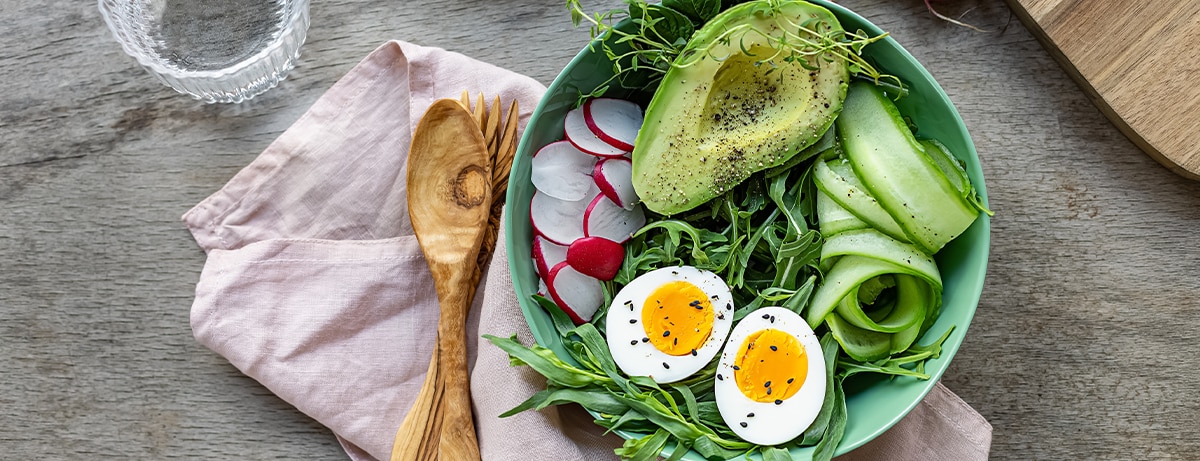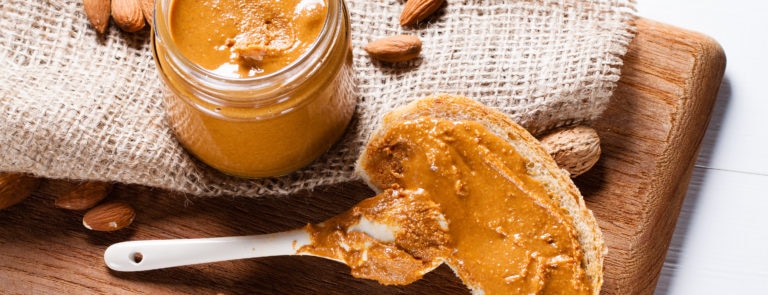10% off £35
Code:SAVE
Surprising low-GI foods you might not know

Want to balance your blood sugar level without missing out on great food? Try these low glycaemic index (GI) foods that will cut down your sugar crashes.
Trying to cut down on sugar crashes? Find out how to balance your blood sugar while still tucking into some of your favourite foods You make every effort to choose healthy meals and snacks. So why do you still have to deal with a sugar crash afterwards? The answer lies in the glycaemic index (GI) – a ranking system measuring how high carbohydrates raise blood glucose. Foods are rated according to how they compare to straight glucose, which scores 100.1 A high-GI food – 70 or more – raises blood sugar levels faster.2
Why do GI scores matter?
A 2007 study in JAMA Internal Medicine linked high-GI foods to a greater chance of type 2 diabetes – with those eating the most having twice the risk. The researchers suggested that carb-heavy foods, like biscuits and white bread, trigger a ‘spike’ in blood glucose levels, raising the body’s demand for insulin. Over time, these changes in blood glucose levels can cause dips and rises in energy levels.3 A high-GI diet could also affect your heart. A 2010 review by America’s National Institutes of Health found that low-GI foods, for example oats, can help lower cholesterol and prevent cardiovascular disease.4Handpicked content: What causes heart disease and am I at risk?
Surprising low-GI foods
Here’s what to choose to eat deliciously, while nailing your blood sugar, too:Spaghetti
Yes, no need to pass on the pasta – it’s actually a low-GI food, at around 51.5 Even better news? A 2018 University of Toronto study found consuming white pasta in a low-GI diet helped people lose weight.6How it works: Pasta carbs are trapped inside a network of protein molecules (gluten) – slowing their conversion into glucose. But make sure you eat it al dente – a longer cooking time raises pasta’s GI score.7
Handpicked content: How to lose weight healthily and keep it off
Sourdough bread
Your crusty baguette scores a whopping 95, but sourdough is just 53. A 2009 study in the British Journal of Nutrition found sourdough triggered lower blood glucose levels than other breads.8How it works: The fermentation process changes the structure of the carbs, slowing the speed of conversion into glucose.9 Pitta, wholemeal, multigrain, chapatti and rye are pretty low-GI, too.10
Sweet potatoes
Boiled sweet potatoes have a GI of just 44.11 They’re also brimming with nutrients, including vitamins A and C.12How it works: Sweet potato sugars break down slowly but to keep GI rock-bottom, boil don’t bake – how you cook them affects sugar content, says a 2016 study in the Journal Of Food Processing and Technology.13
Chocolate
With a GI of 45, chocolate won’t make your blood glucose soar then crash due to it’s high fat conent.14 But opting for dark chocolate could be even better with dark chocolate with at least 70% cocoa having a GI of around 23.How it works: The high-fat content slows absorption of its carbs ¬¬– but go easy, chocolate is still high in calories.16
Raspberries
Fruits vary wildly on the glycaemic index – watermelon is high at 72, for example – but juicy raspberries are pretty low at 45.17How it works: They’re packed with fibre, which naturally lowers GI, plus raspberries are lower in sugar than many other fruits. A 2011 study in Diabetologia reported that eating low-GI fruits, like raspberries, helped to lower participants’ blood glucose levels.18
When to eat high-GI?
Remember that not all high-GI foods are unhealthy – or low-GI foods are healthy. To slow glucose absorption, consider the overall glycaemic load and aim to only eat higher-GI foods as part of a meal: fat, fibre and protein can slow the speed that carbs are broken down into sugars.19Advice is for information only and should not replace medical care. Please check with your GP before trying any remedies.
1. NHS. What is the glycaemic index (GI)? Available from: www.nhs.uk/common-health-questions/food-and-diet/what-is-the-glycaemic-index-gi/
2. The Diogenes Project. Diogenes GI Database. Available from: www.diogenes-eu.org/GI-Database/Default.htm
3. Krishnan S, Rosenberg L, Singer M. Glycemic Index, Glycemic Load, and Cereal Fiber Intake and Risk of Type 2 Diabetes in US Black Women. Available from: https://jamanetwork.com/journals/jamainternalmedicine/fullarticle/413517
4. Meinhold, CL. Low-glycemic load diets: how does the evidence for prevention of disease measure up? Available from: https://www.ncbi.nlm.nih.gov/pmc/articles/PMC3058718/#R17
5. Atkinson F, Foster Powell K, Brand-Miller J. International Tables of Glycemic Index and Glycemic Load Values: 2008. Available from: http://care.diabetesjournals.org/content/31/12/2281
6. Chiavaroli L, et al. Effect of pasta in the context of low-glycaemic index dietary patterns on body weight and markers of adiposity: a systematic review and meta-analysis of randomised controlled trials in adults. Available from: https://bmjopen.bmj.com/content/8/3/e019438
7. University of Sydney. Frequently Asked Questions. Available from: http://www.glycemicindex.com/faqsList.php#12
8. Najjar AM, et al. The acute impact of ingestion of breads of varying composition on blood glucose, insulin and incretins following first and second meals. Available from: https://www.ncbi.nlm.nih.gov/pubmed/18570696
9. Healthline. Why Sourdough Is One of the Healthiest Breads. Available from: https://www.healthline.com/nutrition/sourdough-bread#section1
10. BDA. Glycaemic Index (GI) Food Fact Sheet. Available from: https://www.bda.uk.com/foodfacts/GIDiet.pdf
11. The University of Sydney. Search for the glycemic index. Available from: http://www.glycemicindex.com/index.php
12. BBC Good Food. The health benefits of sweet potato. Available from: https://www.bbcgoodfood.com/howto/guide/health-benefits-sweet-potato
13. Owuso-Mensah E, et al. Cooking Treatment Effects on Sugar Profile and Sweetness of Eleven-Released Sweet Potato Varieties, Available from: https://www.omicsonline.org/open-access/cooking-treatment-effects-on-sugar-profile-and-sweetness-of-elevenreleasedsweet-potato-varieties-2157-7110-1000580.php?aid=72425
14. Weight Loss Resources. GI Tables. Available from: https://www.weightlossresources.co.uk/diet/gi_diet/glycaemic_index_tables.htm
15. Shah SR, et al. Use of dark chocolate for diabetic patients: a review of the literature and current evidence. Available from: https://www.tandfonline.com/doi/full/10.1080/20009666.2017.1361293
16. Diabetes UK. Glycaemic index and diabetes. Available from: https://www.diabetes.org.uk/guide-to-diabetes/enjoy-food/carbohydrates-and-diabetes/glycaemic-index-and-diabetes
17. As Source 14
18. Jenkins DJA, et al. The relation of low glycaemic index fruit consumption to glycaemic control and risk factors for coronary heart disease in type 2 diabetes. Available from: https://www.ncbi.nlm.nih.gov/pmc/articles/PMC3017317/
19. As Source 1
Related Articles
Shop by wellness goal
Sign up for exclusive offers
Plus, get expert advice to support your health & wellness straight to your inbox when you sign up to Holland & Barrett emails.
Read our
privacy policy














